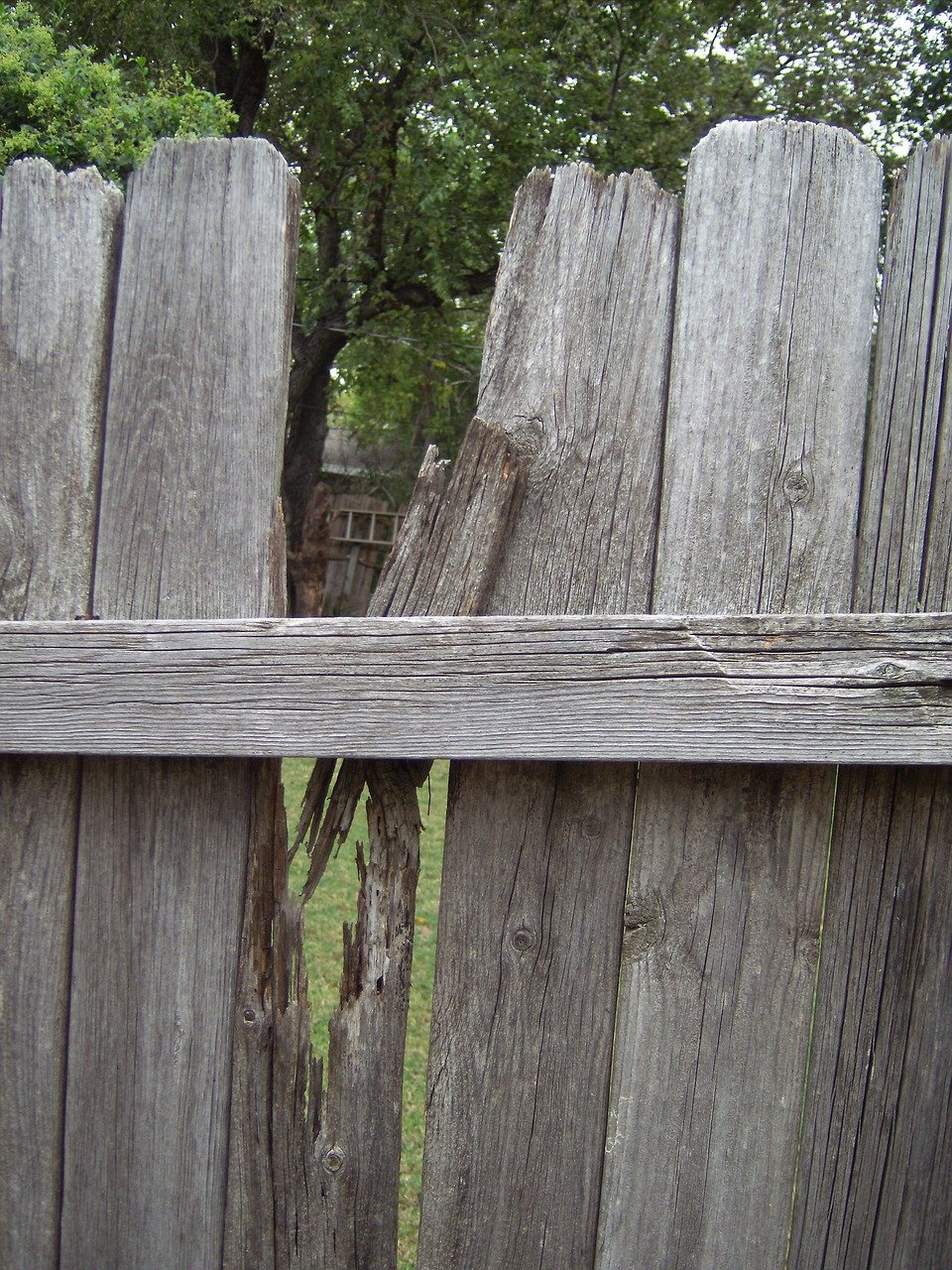
If you’re looking to maximize your space and harvest a bounty of fresh vegetables, then this guide is just for you. Discover the art of growing vegetables vertically and unlock the potential of your garden or balcony. This method not only saves space but also provides numerous benefits such as improved air circulation, easier maintenance, and protection against pests. From trellises to hanging baskets, we’ll explore the various techniques and strategies to help you create a productive and visually appealing vertical garden. Get ready to elevate your gardening skills and reap the rewards of an abundant vegetable harvest.
Introduction
If you’re looking to maximize your gardening potential and create a lush and productive space, growing vegetables vertically is an excellent solution. By harnessing the power of vertical space, you can make the most of limited garden areas, improve air circulation and sunlight exposure, and reduce weed growth and pest problems. In this comprehensive guide, we will explore the advantages of growing vegetables vertically, how to choose the right vegetables for vertical gardening, preparing your vertical garden, setting up trellises or support systems, soil and composting considerations, planting techniques, watering and irrigation methods, pruning and training tips, as well as harvesting and maintenance practices. Get ready to transform your gardening experience and enjoy a bountiful harvest with vertical vegetable gardening!
Advantages of Growing Vegetables Vertically
Maximizing available space
One of the significant advantages of growing vegetables vertically is the opportunity to maximize the available space in your garden. Whether you have a small backyard, a balcony, or a limited planting area, vertical gardening allows you to grow more plants in the same footprint. By utilizing trellises, fences, and vertical structures, you can take advantage of unused vertical areas and grow vegetables upwards, effectively doubling or even tripling your gardening space. This method is especially beneficial for urban gardeners or those with limited land availability.
Improving air circulation and sunlight exposure
Vertical gardening also offers the advantage of improved air circulation and sunlight exposure for your vegetable plants. When plants are grown vertically on trellises or other support systems, they are lifted off the ground, allowing air to flow more freely around the leaves and stems. This increased air circulation helps to prevent disease and fungal issues that can arise from stagnant air. Additionally, vertical growth exposes more surface area of the plants to sunlight, ensuring that each leaf receives the necessary light for photosynthesis. By optimizing air movement and sunlight exposure, you can create a healthier and more productive garden environment.
Reducing weed growth and pests
Another advantage of growing vegetables vertically is the ability to reduce weed growth and pests. When plants are grown vertically, they are spaced closer together, which naturally shades the ground below and inhibits weed growth. Weeds require sunlight to germinate and thrive, so by shading the soil, you can minimize the need for extensive weeding. Additionally, vertical gardening can help deter certain pests due to the elevated positions of the plants. Many common garden pests, such as slugs or snails, have difficulty reaching vertically grown vegetables, reducing the risk of damage or disease transmission. By diminishing weed growth and deterring pests, vertical gardening promotes a low-maintenance and healthy garden space.

Choosing the Right Vegetables
Vegetables that thrive in vertical growing
When selecting vegetables for vertical gardening, it is essential to choose varieties that thrive in vertical growing conditions. Some vegetables naturally lend themselves to vertical growth due to their climbing or vining tendencies. Popular vertical vegetables include tomatoes, cucumbers, pole beans, peas, melons, winter squash, and various types of squash or gourds. These vegetables have flexible stems or tendrils that can be trained to grow upwards along the trellises or support systems. Additionally, vegetable plants with compact growth habits, such as lettuce or herbs, can also be grown vertically using hanging baskets or wall-mounted planters.
Consideration for root depth and weight
When choosing vegetables for vertical gardening, it is important to consider their root depth and weight. While many vertical vegetables have shallow root systems, some, like tomatoes or winter squash, have deeper roots that require sturdy support. Ensure that your trellises or support structures can accommodate the weight and growth habit of the vegetables you choose. A sagging or unstable support system can lead to plant damage or even collapse, compromising the health and productivity of your garden. Taking root depth and weight into account will help you select the appropriate vegetables and avoid any structural issues.
Selecting varieties suitable for trellising
Certain vegetable varieties are more suitable for trellising than others. Look for varieties labeled as “climbing” or “vining” when selecting vegetables for vertical gardening. These varieties are genetically predisposed to growing vertically and will be more responsive to trellising efforts. For example, indeterminate tomato varieties are excellent choices for vertical gardening. These varieties continue to grow and produce fruit throughout the season, making them ideal for upward training. Conversely, determinate tomato varieties have a more compact growth habit and may not perform as well when trellised. By choosing the right vegetable varieties for trellising, you can ensure optimal growth and productivity in your vertical garden.
Preparing the Vertical Garden
Determining the location
When preparing your vertical garden, it is crucial to determine the ideal location for your plants. Consider factors such as sunlight exposure, wind patterns, and proximity to a water source. Most vegetable plants require at least six to eight hours of direct sunlight daily, so choose a location that receives adequate light. Wind patterns can impact the stability of your trellises or support structures, so select a sheltered spot or provide additional protection if necessary. Access to a water source is essential for efficient watering, as vertical gardens may require more frequent irrigation due to increased exposure to wind and sunlight. By carefully selecting the location for your vertical garden, you can set the stage for healthy growth and successful harvests.
Wall-mounted or freestanding structures
Once you have determined the location, decide whether you will use wall-mounted structures or freestanding structures for your vertical garden. Wall-mounted structures are a popular choice for urban gardeners or those with limited space. They utilize existing walls or fences to support vertical growth and can be easily installed with brackets or hooks. Freestanding structures, such as trellises or A-frame structures, are versatile and can be placed anywhere in your garden. They allow for more flexibility in terms of plant placement and can be moved if needed. Choose the option that best suits your available space and aesthetic preferences.
Ensuring proper support and stability
Regardless of whether you choose wall-mounted or freestanding structures, ensuring proper support and stability is crucial for the success of your vertical garden. Invest in high-quality trellises or support systems that are designed to withstand the weight and growth of your chosen vegetables. Ensure that the structures are securely anchored into the ground or attached to walls or fences. Vertical gardening involves training plants to grow upwards, which can exert additional forces on the support systems. Regularly inspect and maintain the stability of your structures to avoid any potential collapse or damage. By providing proper support and stability, you can create a safe and long-lasting vertical garden.

Setting up the Trellis or Support System
Selecting the appropriate trellis materials
When setting up the trellis or support system for your vertical garden, selecting the appropriate materials is essential. Choose materials that are durable, weather-resistant, and strong enough to withstand the weight of your vegetables. Common trellis materials include wood, metal, bamboo, and plastic-coated wire. Wood offers a natural and rustic aesthetic, while metal provides strength and longevity. Bamboo is an eco-friendly option that is both sturdy and lightweight. Plastic-coated wire trellises are affordable and easy to install. Consider the specific needs of your plants and select the trellis materials that best suit your preferences and gardening goals.
Installing the trellis securely
Proper installation of the trellis is crucial to ensure its effectiveness and longevity. Start by measuring the height and width of the area where you will install the trellis. Determine the spacing between the vertical posts or brackets, allowing sufficient room for the plants to climb and spread. Use a level to ensure that the trellis is installed vertically and securely. If using wall-mounted structures, ensure that brackets or hooks are properly attached to the wall or fence. For freestanding structures, anchor the posts securely into the ground and consider using additional support, such as stakes or crossbars, for stability. Taking the time to install the trellis properly will provide a solid foundation for your vertical garden.
Maintaining appropriate spacing and height
Maintaining appropriate spacing and height in your vertical garden is vital for optimal plant growth and air circulation. Space the plants on the trellis or support system according to their specific requirements, considering factors such as spread, depth, and sunlight needs. Allow enough distance between each plant to prevent overcrowding, which can lead to poor air circulation and increased risk of disease. As the plants grow, regularly train them to follow the desired upward path by tying them gently to the trellis or support system. Prune any excessive growth that may impede the development of other plants or hinder air movement. By maintaining appropriate spacing and height, you can create a well-organized and productive vertical garden.
Soil and Composting
Choosing the right soil mix for vertical gardening
Choosing the right soil mix is essential for the success of your vertical garden. Optimal soil conditions promote healthy root development, nutrient uptake, and overall plant growth. Select a well-draining soil mix that retains moisture while allowing excess water to drain away. A good soil mix for vertical gardening may include a combination of compost, perlite or vermiculite (for improved drainage), and organic matter, such as peat moss or coconut coir (to retain moisture). Ensure that the soil mix is lightweight, as the weight of the soil can increase the stress on your trellis or support system. Conduct a soil test to determine the pH level and make any necessary adjustments to provide the ideal growing conditions for your vegetables.
Preparing the soil for planting
Before planting, prepare the soil in your vertical garden to ensure optimal growth and plant health. Start by clearing the area of any debris, weeds, or rocks. Loosen the soil with a garden fork or tiller, breaking up any compacted areas. Add organic matter, such as compost or well-rotted manure, to improve soil fertility and structure. Incorporate the organic matter into the soil by using a garden rake or shovel. Smooth the surface of the soil to create a level planting area. It is also beneficial to add a layer of mulch on top of the prepared soil to retain moisture and suppress weed growth. Taking these steps to prepare the soil will provide a nutritious and well-aerated environment for your vertical garden.
Benefits of composting for vertical gardens
Incorporating composting into your vertical garden routine offers numerous benefits for both the plants and the environment. Composting allows for the recycling of kitchen waste and plant trimmings, reducing the amount of organic material sent to landfills. Compost adds valuable nutrients to the soil, improving its fertility and structure. As a result, plants grown in compost-amended soil tend to be healthier and more robust. Composting also enhances soil moisture retention, reducing the need for frequent watering. By embracing composting in your vertical gardening endeavors, you can foster sustainability, conserve resources, and create a thriving garden space.

Planting Techniques
Starting seeds indoors
Starting seeds indoors is a great way to get a head start on your vertical garden. Begin by selecting high-quality seeds from a reputable source. Fill seed trays or pots with a seed-starting mix, which is lighter and more sterile than regular garden soil. Follow the instructions on the seed packet to determine the appropriate planting depth and spacing for each vegetable. Place the trays or pots in a location that receives ample sunlight or use artificial lighting if necessary. Maintain consistent soil moisture by misting or watering gently. As the seedlings develop, gradually acclimate them to outdoor conditions by exposing them to the outside environment for a few hours each day. After the danger of frost has passed, transplant the seedlings into the prepared soil of your vertical garden, taking care not to disturb the delicate roots.
Transplanting seedlings
Transplanting seedlings into your vertical garden requires careful handling and attention to ensure their successful establishment. Take note of the specific planting requirements of each vegetable, including spacing and depth. Before transplanting, water the seedlings thoroughly and gently remove them from the seed trays or pots. Dig a hole in the prepared soil of your vertical garden that is large enough to accommodate the root ball of the seedling. Place the seedling in the hole, making sure that the soil level is even with the surrounding garden bed. Gently firm the soil around the seedling, ensuring that there are no air pockets. Water the transplanted seedlings immediately after planting to help settle the soil and provide essential moisture. Regularly monitor the moisture levels and provide supplemental irrigation as needed until the seedlings are fully established.
Direct sowing on the trellis
Certain vegetables can be directly sown on the trellis or support system in your vertical garden. Direct sowing refers to planting seeds directly into the prepared soil without starting them indoors. Choose vegetables that are well-suited for direct sowing, such as beans, peas, or squash. Prepare the soil by raking it to a smooth surface. Create shallow furrows along the trellis or support system with a garden hoe or trowel, following the recommended spacing for each vegetable. Plant the seeds according to the depth specified on the seed packet and cover lightly with soil. Water the newly sown seeds gently to ensure sufficient moisture for germination. As the seeds germinate and seedlings emerge, thin them to the desired spacing to prevent overcrowding and ensure proper plant growth. Direct sowing allows for a simpler planting process and is a convenient option for certain vegetable varieties.
Watering and Irrigation
Establishing a watering schedule
Establishing a consistent and adequate watering schedule is essential for the health and productivity of your vertical garden. Monitor the soil moisture levels regularly and water when the top inch of soil begins to dry out. The frequency and amount of watering will depend on factors such as temperature, sunlight exposure, wind, and the specific water needs of each vegetable. To prevent overwatering and promote deep root growth, water deeply until the soil is evenly moist but not saturated. An effective way to determine when to water is to use a moisture meter or simply insert your finger into the soil to check for moisture levels. Adjust your watering schedule as necessary throughout the growing season to account for changing weather conditions and plant requirements. Consistent watering will help your vertical garden thrive and produce abundant harvests.
Using drip irrigation systems
Drip irrigation systems are an excellent option for vertical gardens as they deliver water directly to the root zone of the plants, minimizing water waste and reducing the risk of foliar diseases. Drip irrigation systems consist of a series of pipes or tubing that distribute water through emitters or drippers positioned near the base of each plant. This method allows for controlled and precise watering, reducing the chance of water runoff or evaporation. Drip irrigation systems can be set up with timers or sensors, further automating the watering process. Installing a drip irrigation system in your vertical garden will ensure that your plants receive consistent and efficient watering, leading to healthier growth and optimal yields.
Watering techniques to prevent run-off
When watering a vertical garden, it is important to employ techniques that prevent runoff and ensure efficient water absorption. To prevent runoff, water slowly and evenly, allowing the soil to absorb the moisture. If you notice water pooling on the surface, pause and resume watering once the soil has absorbed the initial moisture. Another technique to prevent runoff is to use mulch around the base of the plants. Mulch helps to retain moisture in the soil by reducing evaporation and slowing down water movement. Additionally, you can create small basins or shallow channels around each plant to catch water and allow it to permeate the soil gradually. These techniques will help to prevent water waste, optimize irrigation efficiency, and promote healthy plant growth in your vertical garden.
Pruning and Training
Importance of pruning for vertical growth
Pruning plays a crucial role in maintaining vertical growth and maximizing the productivity of your vegetable plants. By selectively removing unwanted or excessive growth, you can direct the plant’s energy toward upward growth and fruit production. Pruning also promotes air circulation and reduces the risk of disease by eliminating crowded and overlapping foliage. Regularly assess your plants for any dead or damaged branches and remove them promptly. Pay attention to the growth habit of each vegetable and prune accordingly. For vining plants, remove lateral branches or suckers that divert energy away from the main stem. For plants with excessive leaf growth, thin out the foliage to improve sunlight penetration and airflow. Pruning is a valuable practice that encourages healthy growth and ensures the longevity of your vertical garden.
Techniques for training plants on trellises
Training plants on trellises is an essential aspect of vertical gardening that encourages vertical growth and prevents sprawling or tangling. Train the plants by gently tying or weaving the stems to the trellis as they grow. For vining plants, such as cucumbers or tomatoes, guide the main stem along the trellis, securing it at various intervals with plant ties or soft garden twine. Encourage lateral branches to grow horizontally along the trellis, tying them loosely if necessary. It is essential to monitor the growth of your plants regularly and adjust the training as needed. Avoid tight or constricting ties that may damage the plants or restrict their growth. By employing proper training techniques, you can control the direction and growth of your plants, maximizing their potential in a vertical garden.
Managing excessive growth
In a vertical garden, it is important to manage excessive growth to prevent overcrowding and optimize plant health. As plants thrive in the optimal growing conditions of a vertical garden, they may produce an abundance of foliage that can impede airflow and hinder fruit development. Assess your plants regularly and remove any excessive growth that may be obstructing neighboring plants. Prune leaves or branches that are shading other parts of the plant or blocking sunlight penetration. Consider selectively removing some fruits or vegetables to ensure that there is enough space for the remaining produce to grow to its full potential. By managing excessive growth, you can maintain a balanced and productive vertical garden throughout the growing season.
Harvesting and Maintenance
Determining optimal harvest time
Determining the optimal harvest time is crucial to ensure the best flavor and quality of your vegetables. Each vegetable has its specific signs of maturity and harvest window, so refer to the seed packet or gardening resources for guidance. Generally, vegetables should be harvested when they are fully ripe but before they become overripe or start to decline in quality. Observe the color, size, and texture of the vegetables to determine their readiness. For example, tomatoes should be fully colored and firm, while cucumbers should be dark green and crisp. Using a gentle twist or slice, carefully harvest the vegetables without damaging the plants or neighboring fruits. Regularly harvest the ripe produce to encourage continued production and prevent overcrowding in the vertical garden.
Practices for maintaining a healthy vertical garden
To maintain a healthy vertical garden, several practices should be incorporated into your routine. Monitor the plants regularly, checking for any signs of disease, pests, or nutrient deficiencies. Remove any weeds that may emerge, taking care to prevent their spread. Water the plants according to their specific needs, ensuring that they receive adequate moisture without becoming waterlogged or overly dry. Fertilize the plants regularly with organic or slow-release fertilizers to provide essential nutrients. Mulch around the base of the plants to suppress weed growth and retain moisture. Inspect the trellises or support structures for stability, tightening any loose connections if necessary. By practicing regular maintenance, you can create an environment that promotes plant health and boosts the productivity of your vertical garden.
Post-harvest maintenance and clean-up
After harvest, it is important to conduct post-harvest maintenance and clean-up to prepare your vertical garden for the next growing season. Remove any remaining plant debris, including dead leaves or stems, to reduce the risk of disease or pest carryover. Compost or dispose of the debris responsibly. Inspect and repair any damaged trellises or support structures, replacing any broken or worn parts. Amend the soil with organic matter or fertilizer to replenish nutrients. Consider rotating crops and changing the location of your vertical garden to prevent the build-up of pests or diseases. Finally, take the opportunity to review your gardening notes and reflect on the successes and areas for improvement in your vertical garden. Post-harvest maintenance and clean-up will set the stage for a successful next season and ensure the longevity of your vertical gardening endeavor.
In conclusion, growing vegetables vertically offers numerous advantages, including maximizing available space, improving air circulation and sunlight exposure, and reducing weed growth and pests. By choosing the right vegetables, preparing your vertical garden, setting up a trellis or support system, ensuring proper soil and composting, employing planting techniques, watering and irrigation methods, pruning and training, as well as implementing appropriate harvesting and maintenance practices, you can create a thriving and productive vertical garden. Embrace the possibilities of vertical gardening and enjoy the abundance of fresh vegetables right at your fingertips!





